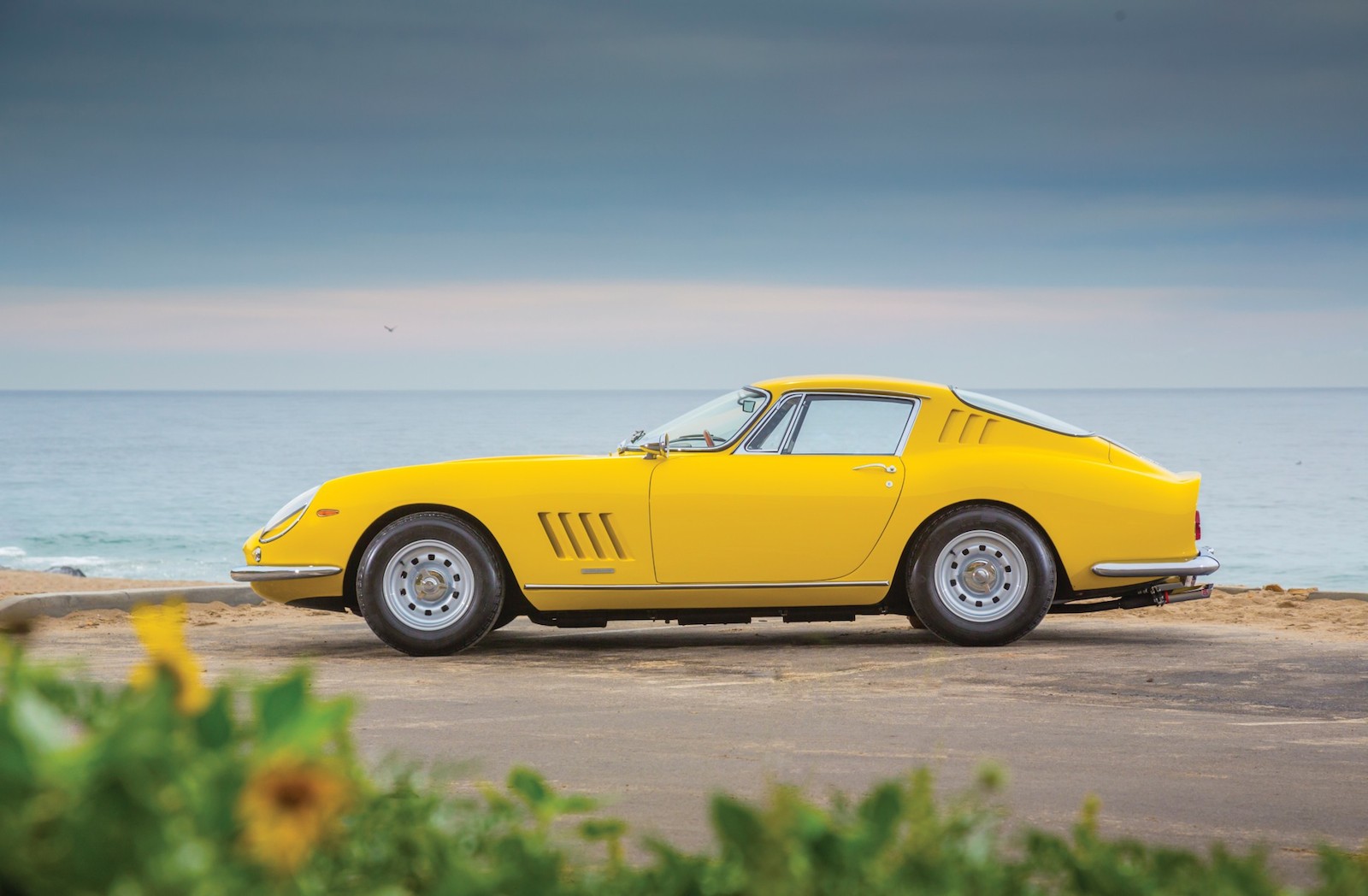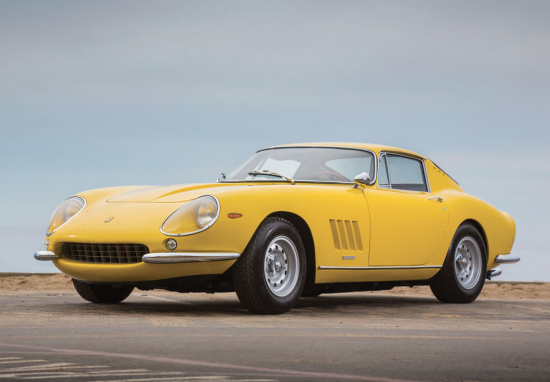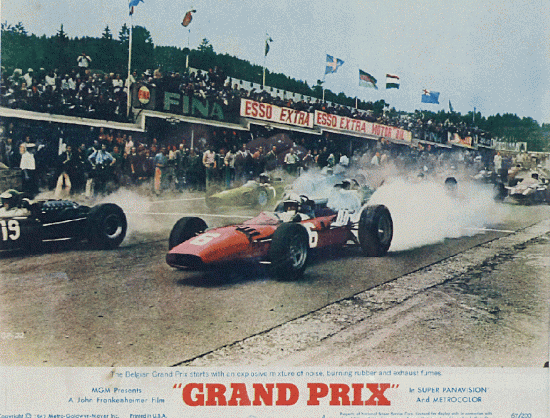by Wallace Wyss
Anybody who loves car racing movies likes the movie Grand Prix. And most people who know the movie know that the director, John Frankenheimer, was a Ferrari guy all the way. In fact the only way he was able to make the movie was that Enzo Ferrari loaned him race cars and let him shoot some scenes at the factory. He owned a 275GTB that is coming up for auction in Scottsdale in January at the RM auction.
This one is the second generation version, introduced at the Paris Motor Show in October 1966 with both the long-nose body style that had been adopted late in the original 275’s production run, and with the revised version of Gioacchino Colombo’s short-block, 3.3-liter V-12 now with four cams.
With dry-sump lubrication and six carburetors, it cranked out 20 more horsepower than its predecessor.
RM claims only 330 275 GTB/4 coupes were produced before the model was discontinued in 1968, adding a degree of rarity to the revered Ferrari as well.
John Frankenheimer, created such memorable movies as The Manchurian Candidate, Grand Prix, and Ronin. The auction company was able to get a hold of a lot of original correspondence between Mr. Frankenheimer and Col. R.J. Hoare, of England’s Maranello Concessionaires, who sold him #10451.
RM is selling it painted fly yellow but according to the records, it was delivered to the director with a steel body finished in Blu Sera paint with a beige leather interior.
Movie producers being busy guys, it was sent to him on location in Budapest, Hungary, where he was filming The Fixer.
But he had problems with the car running well in the cold weather and someone had the job of taking it all the way back to England for the carbs to be fettled. Race driver Michael Salmon was hired to do it, and since he had raced at LeMans six times it was no big deal for him to drive it there.
The car was eventually shipped to America on board the Queen Elizabeth. But the producer/director tired of it and by 1971 it sold it to Karl Fekete, of Inglewood, California. (Anybody know that price?). It was from him that Paul Forbes bought it in ’86.
I had a run-in with Forbes, he worked for the LA Times as a pressman and thus got to see car ads before they hit the Sunday Times. He and I had a tiff over me beating him to a car which I had found by running ads in the Auto Trader asking if anyone had the same type of car for sale. Forbes thought I “broke” the rules by buying it before the Times came out, not mentioning he was doing the same thing.
The car then went to Japan where it had two different owners, and then in 1990 another nefarious figure entered the ownership chain– financier Hans Thulin in Sweden. I haven’t found out yet if it was sold by the bank who nabbed many of his cars after he declared bankruptcy but it left his ownership in 1992, then went to collector Chris Cox, who later sold it to an old car racer, Bruce Male, of Boston, Massachusetts. He kept the car for two full decades and it was he who changed it to Fly Giallo.
RM thinks it will go for between $3,500,000 and $4,500,000 USD.
Methinks the sellers should at a minimum throw in a DVD of Grand Prix or at least screen it in the background as the car rolls across the stage. The film is respected in the racing community for its photography, with shots from inside the cars, from the air, and along the track.
The fact that most of it was shot at high speed in real life, and much of it at actual Formula One races, set the standard for racing movies.
Ironically the personal stories of the characters seem to slow the film down, giving more credibility to what’s that racer’s slogan (attributed to Steve McQueen) which goes something like “racing is life, everything else is only waiting,” something like that.
However, the personal stories of the characters seem to drag quite a bit, compared to the action on the track, though I did like the scene where they go to the posh family home of a racer that’s been killed and it is so sad (but would have it been sad if he lived in a dump?).
————————————————————————————
THE AUTHOR: Wallace Wyss once bought a Ferrari from a film producer, the story told in his book Incredible Barn Finds, available from Enthusiast Books (Hudson, WI).
Let us know what you think in the Comments.
Sell your classic car on My Car Quest – click here.








The quote you reference is from Rudolph Caracciola. Steve McQueen “borrowed” it. The actual quote is, “To race is to live. All the rest is simply waiting.” It always irritates me a bit to see the McQueen version even though I’m a McQueen fan and Le Mans is one of my favorite movies. And who doesn’t like Frankeheimer’s movies?
Beautiful 275 as well.
The Fixer was filmed in 1968. This was during the high times of the Communism in Eastern Europe, 10 years after the Hungarian uprising and the same year of the Czech revolution in Prague. I can imagine the furror caused and the impression this car must have left on the commrades in arms…